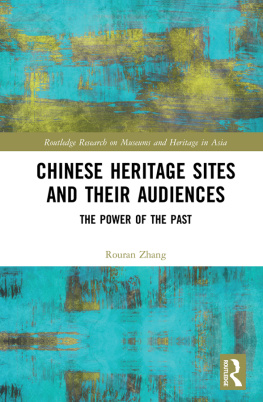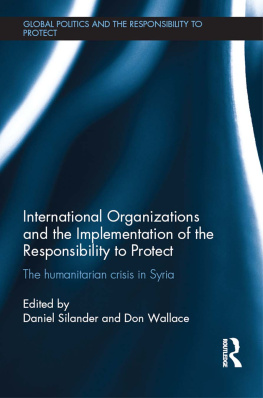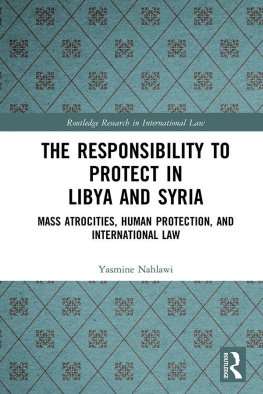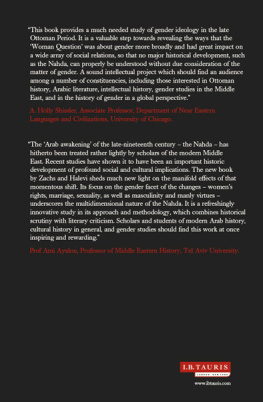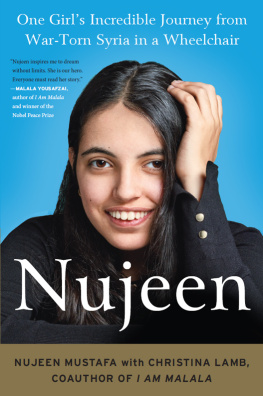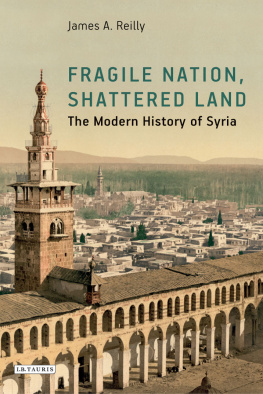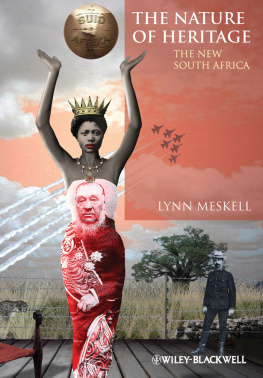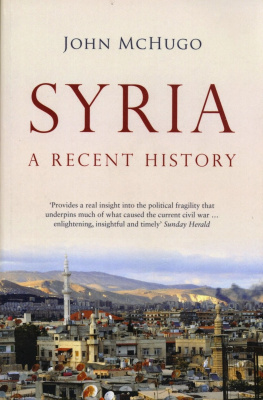Syrias Endangered Heritage:
An International Responsibility to Protect and Preserve
2015
Franklin P. Lamb, PhD
Translated into Arabic by :
Rasheed Abdul Hadi
Orontes Publishing House, LTD 2015
Syria s Endangered Heritage :
An International Responsibility to Protect and Preserve
2015
Franklin P. Lamb, PhD
Published by Orontes Publishing House, LTD
Hama, Syrian Arab Republic
orontesriverpublishing@gmail.com

Copyright 2015 by Orontes Publishing House, LTD
All rights reserved .
No part of this book may be reproduced or distributed
Without permission from the publisher .
ISBN (978-9953-0-3084-5)
Designed by
Khaled Majed Hiatlih
Official Website:
Dedication
In loving memory of Clyde Chester Lamb III
Died April 18, 1983 US Embassy Beirut
Never will Clyde be forgotten. Nor the joy he was destined to bring many .
This volume is dedicated to the brightest lights of my life :
Alistair Xavier
Louisa Amanda
Fairouz Helen
Helen Barbara
May life s journey guide each of you to cross paths with the ten millennia of Cultural Heritage of Great Syria, our world s Cradle of Civilization .
And may her noble people achieve the healing and enduring peace which is their birthright .
Damascus
February 26, 2015
Look back over the past, with its changing empires that rose and fell ,
and you can foresee the future, too .
- Marcus Aurelius -
Contents
Dedication
Acknowledgements
Foreword
By Eng. Besher Riad Yazji
Minister of Tourism
Foreword
By Prof. Dr. Maamoun Abdulkarim
General Director of Antiquities and Museums
Preface
By Mr. Khaled Majed Hiatlih
Archaeologist
Introduction
Chapter 1
Years of War in Syria Are Destroying Our Cultural Heritage
An Overview
A Brief Survey of Syria s Museums
Physical Damage to Museums
Thefts from Museums
Forgery of Antiquities
Construction violations
Jewish Cultural Heritage
Syrian Efforts to Preserve Jewish Heritage
Debasement of archaeological sites and damage to historic neighborhoods
Chapter 2
National and International Legal Protections
for Syria s Cultural Heritage
An overview of key provisions in Syrian antiquities laws
Pending changes to Syria s antiquities law
Sources of international law applicable to Syria s cultural heritage
The 1995 UNIDROIT Convention
Will events in Syria mirror those in Iraq ?
Why has International law been unable to protect Syria s cultural heritage?
Chapter 3
Paradise Lost ?
Raqqa is Being Slaughtered Silently
Public Executions and Pulverized Lions
The Syrian government launches restoration projects
Chapter 4
This Has Never Happened in Our Country
Tesserae from the Maelstrom
Tea and Pastry and a Talk with Syrian Students
Damage and Desecration to Religious Sites
Saint Elias Church and the Battle for Qusayr
Chapter 5
A Clarion Call to the International Community To Protect and Restore
Syria s Cultural Heritage Our Heritage
Recommendations
UNWTO
DGAM and the Grass Roots Citizens Campaign to Save Syria s History
Cooperation By Nations
The Role of INTERPOL
Private Researchers as Sleuths
United Nations Appeal 2004 and 2014
UN Security Council Resolution on remedial measures
Regulatory Action Also Needed from U.S. Congress
International support for DGAM s work
Conclusions
Appendix
Satellite pictures to monitor cultural heritage damage in Syria
Bibliography
Index
About the Author
Acknowledgements
This project was inspired by friends in Syria whose deep love for their country and its cultural heritage at first puzzled me. From my experiences in this region and this country, I have come to learn about and value the deep bond that Middle Easterners generally, and Syrians particularly , have with the many thousands of years of history and culture across this region. The connection between Syrians and their cultural heritage seems to me to be almost genetic. Different somehow , from what I and many friends of mine feel for our, by comparison, very new country which we love but seemingly in different ways and to different degrees and without the same deep historic and archeological connections .
Syrians from across this great country unfailingly provided me, over the past two years with essential assistance on countless occasions. Examples are numerous and include my new friends among the Palmyra Museum officials, across the desert from Homs northeast of Damascus, and staff at various local government entities at several archeological sites: the Shrine to Sayyida Zeinab, the granddaughter of Prophet Muhammad south of Damascus, various locations in the old city of Damascus, such as the Umayyad Mosque and ancient Citadel, the much damaged ancient souks of Homs and Aleppo, to name just a few. With many other local officials and community activists, they often provided fascinating details about Syria s cultural heritage and the current dangers to her (and our) cultural heritage, which, for centuries if not millennia, has been located in their Governorates .
I thank the lovely and inspiring students and dedicated faculty from Damascus, Al Baath , and Aleppo Universities and other institutions of learning in Syria, including Damascus public and private schools, and vital help from the general population. I am particularly indebted to Richard Edmonson, Miriam Adams, Professor Virginia Tilley, Ghada Jilani, Khaled Hiatlih, Rasha Haqi , Reem Haddad of the Ministry of Information and Dr. Maamoun AbdulKarim and his staff at the Directorate General of Antiquates and Museums (DGAM), Alistair Xavier Lamb, Ms. Sawsan Fattoum and my dear friend Ayman Talal al Nabhan for their generous editorial help and frequent counsel and assistance on many aspects of this project .
I wish to acknowledge, with thanks, the sundry military and security personnel at checkpoints around Syria who were always professional and courteous and unfailingly helpful about road conditions and potential dangers. The most frequent advice offered to the author, after looking at my passport and asking, usually good naturedly What is an American doing around here ? was stay off the roads after dark because there are bad people on your route ! Their advice and extended friendship facilitated travel around Syria during the current crisis and were reassuring and much appreciated, even if I could not always follow their logistical advice given how quickly daylight passes these days, seemingly even faster in the desert somehow .
At some locations, such as the eleventh century Crusader fortress between Homs, Syria and the Lebanese mountains known as Krak des Chevaliers, the local commander Muhammad and his troops could not have been more helpful or entertaining as they generously offered enthralling tales from the rich history of the massive fortress built in the Middle Ages and the many roles it has played militarily and geopolitically over the past thousand years. Much valued informal seminars over cups of local tea and freshly picked mulberries, the latter which soldiers picked from bordering trees which some say were originally brought to the Middle East from Europe by the crusaders. I was briefed on details of a few battles over the past many months in the villages surrounding Krak des Chevaliers, against various jihadist militias. I was shown the private quarters and fascinating personnel effects of the last of the Emirs of Krak des Chevaliers , Abu Sulieman , before he escaped back to Tripoli, Lebanon, only to be ambushed not far from the fortress by Syrian troops who laid a trap for him and his men, some with their families in tow, in early March 2014.
Next page

